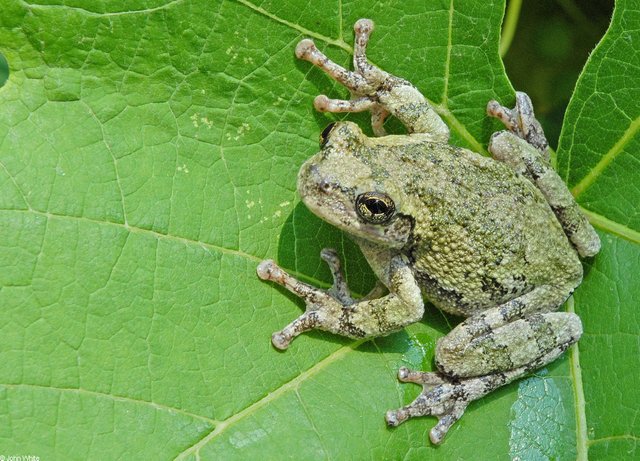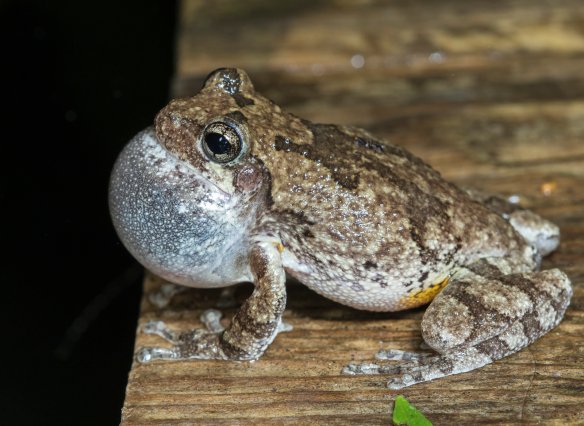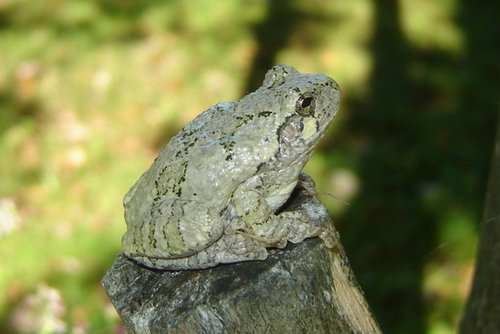How Treefrogs Overcome the "Cocktail Party Problem"
Let's imagine for a moment that you are at a pretty substantial gathering. Maybe it's a wedding, perhaps a concert or other social event attended by a large number of people. There is a lot of chatter and music, and the sheer number of people present has brought the noise to a pretty high volume. Now imagine that at this large social event, you are trying to have a nice conversation and catch up with your friend whom you haven't seen for some time. But here is the problem: the room or venue is so noisy with background sounds that it threatens to overwhelm and drown out your conversation. This is a scenario that many scientists have dubbed the "cocktail party problem".
So how do we overcome this problem (hopefully without just trying to yell over the noise)? Well, humans have the ability to to subconsciously find patterns in the background noise and selectively ignore these patterns. By focusing in on the patterns we DO want to hear, we are able to hold conversation or make out specific sounds even in a noisy room of fluctuating volumes and patterns.
The Cocktail Party Problem comes into play when dealing with vocal species such as the Cope's gray treefrog (one of my favorite amphibian species). During the evenings of spring and early summer, Cope's gray treefrogs can be heard calling out in deafening choruses of hundreds of individuals; each is a male frog broadcasting his species identity, location and overall fitness (faster, longer calls indicate higher fitness) to attract females. It is up to the females to find a fit male that will best ensure the survival of her young.
"The females have to be able to tell the appropriate species and be able to choose a high-quality male." -Norman Lee, postdoctoral fellow in the Department of Ecology, Evolution, and Behavior Source
To be able to select the best possible male, it is up to the female to pick up the important bits of information out of the almost overwhelming cacophony of frog calls. With everyone calling out at once, scientists have to wonder: do the frogs use a similar ability to exclude the sounds they don't want to hear, and better hone in on those that they need to understand?
Lee understood that humans can hear certain sounds better in noisy environments when the loud background noise was "comodulated" meaning that the various frequencies of sound it comprises vary in loudness together (Source). After analyzing the calls of local frog populations, Lee found that the overlapping choruses produced by these frogs are comodulated as well, suggesting that this could be a key to the success of the female treefrogs.
"What we [still] didn't know is if animals could exploit these features for improved decision-making." -Lee Source
To determine the answer to that question, Lee came up with a simple test for female treefrogs. He created several artificial choruses made up of two noise bands centered on the calling frequencies (Source). One chorus was unmodulated meaning that the sound did not vary in intensity, one where the noise bands were modulated but not together, and one chorus sample that was comodulated. He then presented female Cope's gray treefrogs with two call samples: one was a male of the same species while the other was a sample of another similar sounding species of frog. The different choruses Lee produced were then played in the background as ambient noise to see if the female could overcome these sounds to determine the correct call. It was only when the background chorus was comodulated that females were best able to determine the call of the same species. Lee set up a similar test, this time with both calls belonging to male Cope's gray treefrogs, however one was slightly longer and repeated more frequently, suggesting an individual of greater fitness. Again, in a comodulated setting, the females were more likely to move toward this particular male.
"Previous studies of animal communication have generally regarded noise as a relatively static feature of the animal's acoustic environment. What this new work shows is not only that noisy acoustic scenes are, in fact, dynamic, but also that they are dynamic in predictable ways that animals have evolved to exploit to avoid noise-induced errors in communication." -Mark Bee, associate professor, Department of Psychology Source
Interesting results to be sure, but at the end of the day, how is this important or applicable to us? By studying the unique structures of frogs' ears and how they process sounds, scientists are optimistic that we can produce better hearing aids and more advanced speech recognition systems. The survival and procreation of these frogs is dependent on their ability to obtain important information in incredibly loud settings. From this we could potentially make it possible for even those hard of hearing to hear important information with complete clarity!
Video Link: 1
Article Link: https://www.sciencedaily.com/releases/2017/06/170607123911.htm







Very interesting post. Thanks for sharing
Great Post.
There's a tiny pond 40' from our bedroom window and there's about 1-2 week period in the Spring when the sound is deafening.
While I'm not a herpetologist, I think I've identified them as Gray Treefrogs (the link is to some of the pics I took. They were so tiny I thought they MUST be some new, undiscovered species).
However, I think you're overlooking another huge benefit this could provide for the most vulnerable, and yet the most contributive subspecies of the human race, i.e. nerds/geeks.
If you could synthesize this and make it some kind of wearable device, you could sell them for $1,000,000 each to sciency types who would finally stand a chance picking up hot chicks in bars. ;-)
Great citations, most don't bother with that too much around here. Thanks for introducing this concept to me.
Love this post and information. I've battled hearing loss throughout my life. At one point before my surgery, I couldn't hear my wife if we were in a booth at a restaurant. Everything just muffled into a "Charlie Brown Teacher" mess.
I was not expecting the outcome with the potential applications to humans :)
i love a good cocktail party... and a good treefrog